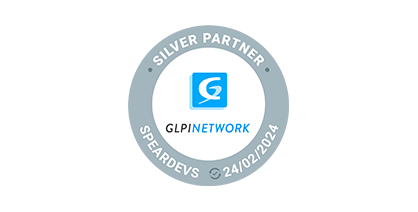Building a web application can feel like tackling a massive puzzle. But when you break it down into clear steps, it becomes much easier to manage.
Whether you’re just starting or have some experience, knowing the essential stages of web app development is key.
Let’s walk through the basic step-by-step guide to web application development.
What is web application development?
Web application development is about creating software that runs on web servers and is accessed through web browsers.
Think of apps like Gmail or Facebook – these aren’t installed on your computer; instead, you use them through your browser.
The process of making these apps involves several phases: planning, designing, developing, testing, and finally deploying them for people to use.
Step 1: Planning and research
Define your goals
The first step in creating a web application is knowing what you want to achieve. Good project planning is your foundation.
Ask yourself some questions:
- What problem does my app solve?
- Who will use it?
- What features are absolutely necessary?
By answering these, you set a clear path for your project and ensure you’re meeting a real need.
Market research
Next, look around and see what’s already out there. Conduct market research to understand what your potential users want and what your competitors offer. This helps you spot opportunities and figure out how to make your app differ from the competition.
Technical feasibility
It’s also important to see if your idea is technically doable. Decide on the technology stack, which means the programming languages, frameworks, and tools you’ll use. Make sure these choices fit your project’s goals and can grow with your app.
Step 2: Design
User Experience (UX) design
User experience design refers to making your app easy and enjoyable to use. Start by creating wireframes – simple drawings that show the layout of your app. These help you plan how users will navigate through your app without worrying about the details yet.
User Interface (UI) design
After your wireframes are set, focus on the look of your app. Design the user interface to be attractive and aligned with your brand. Choose colors, fonts, and styles that make your app pleasant to look at and easy to use. Check tips for winning product page design.
Prototyping
Create a prototype – a working model of your app. This lets you see how your design works in real life and find any problems early. Prototypes are great for getting feedback and making improvements before you start full-scale development.
Step 3: Development
Front-end development
Front-end development is about building what users see and interact with. Use HTML, CSS, and JavaScript along with frameworks like React or Angular to create a responsive and interactive interface. The goal is to make sure everything looks good and works well on all devices.
Back-end development
Back-end development handles everything users don’t see. This includes the server, database, and application logic. Use languages and frameworks like Node.js, Django, Symfony to build a solid foundation for your app. Make sure your back-end is secure, efficient, and can handle lots of users.
Database management
Choose a database to store all the data your app will use. Options may include MySQL for structured data or MongoDB for more flexible data storage. Design your database carefully to ensure it’s fast and scalable, meaning it can grow as your user base grows.
Step 4: Testing
Functional testing
Testing makes sure everything in your app works as it should. Write test cases for each feature and conduct both manual and automated tests. This helps catch and fix bugs before your users ever see them.
Performance testing
Performance testing checks how your app performs under different conditions. Use tools to simulate lots of users accessing your app at once. This ensures your app remains fast and reliable even when it’s popular.
Security testing
Security is crucial. Conduct security tests to find and fix vulnerabilities. Use tools like ZAP to scan for common security issues and protect your users’ data.
Step 5: Deployment
Prepare for deployment
Before you launch, make sure everything is ready. Clean up your code, write documentation, and set up a continuous integration and deployment pipeline to automate the process.
Choose a hosting service
Pick a hosting service that fits your needs. Cloud services like AWS or Google Cloud are flexible and powerful, while services like Heroku make deployment easy. Choose based on your app’s requirements and your own technical comfort level.
Monitor and maintain
After your app is live, keep an eye on it. Use tools like Google Analytics to track how users interact with your app and identify any issues. Regular maintenance, updates, and improvements are key to keeping your app running smoothly and meeting users’ needs.
Summary
Developing a web application requires a good plan, a user-friendly design, solid development practices, and thorough testing. By following these steps, you’ll be well on your way to creating a successful web app that users will love.
GET IN TOUCH
Looking to create web application but don’t know where to start?
Our experienced team of developers can guide you through the entire process, from initial concept to final deployment.
Web application development – FAQs
What is the difference between a web application and a website?
Web application is interactive and allows users to perform tasks, like online banking or email. A website typically provides information and may not offer such interactive features.
How long does it take to develop a web application?
It depends on the complexity of the app. Simple apps might take a few months, while more complex ones can take a year or more.
What are some popular frameworks for web application development?
Popular front-end frameworks include React, Angular, and Vue.js. For back-end development, many developers use Node.js, Django, Ruby on Rails, and Symfony.
How can I ensure my web application is secure?
Regularly conduct security testing, use secure coding practices, keep your software updated, and use tools like OWASP ZAP to find and fix vulnerabilities.
What are the costs associated with web application development?
Costs vary widely depending on the complexity, technology stack, and location of your development team. Expenses include developer salaries, design costs, hosting fees, and ongoing maintenance.























